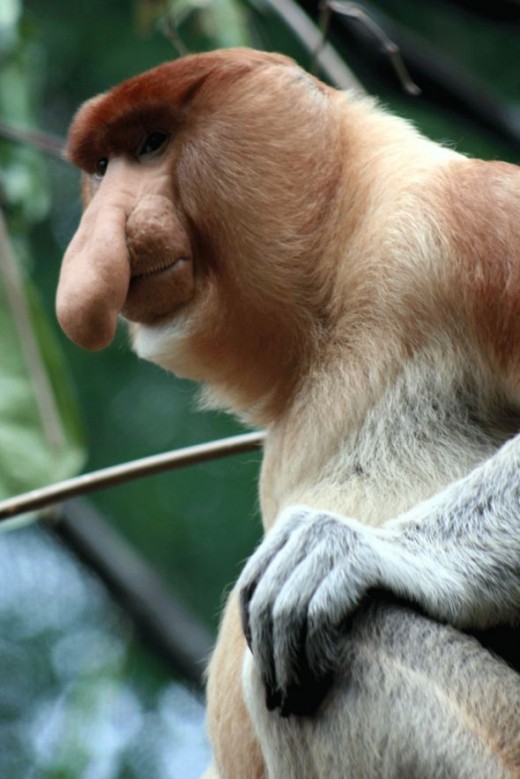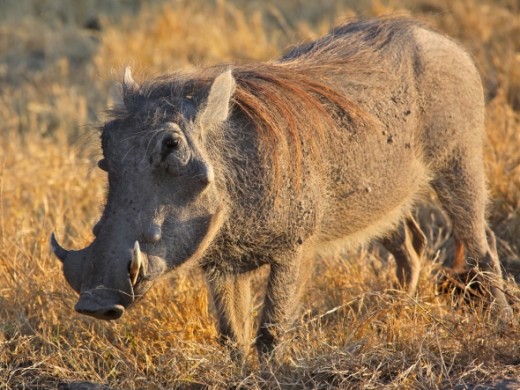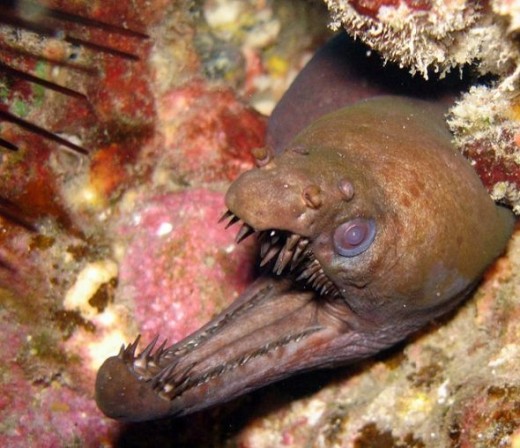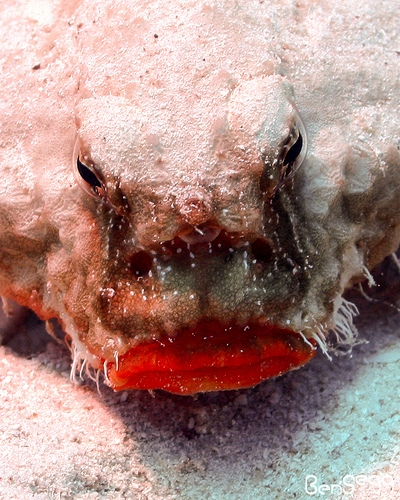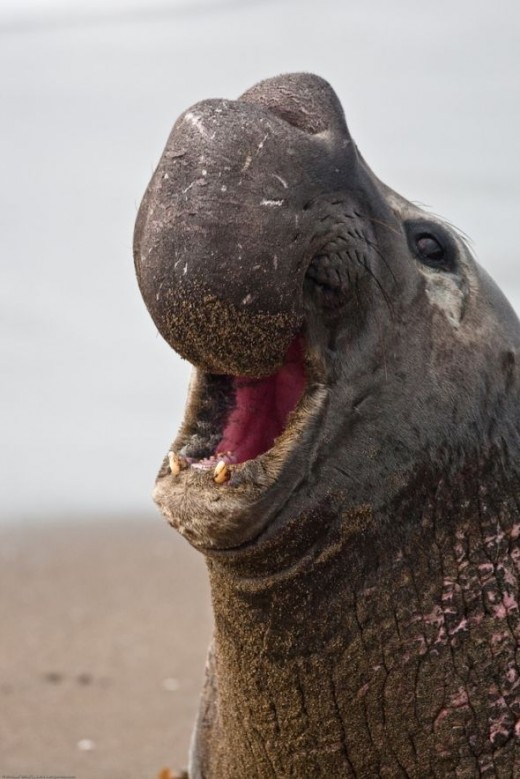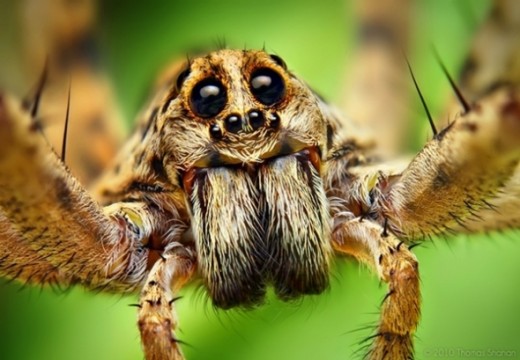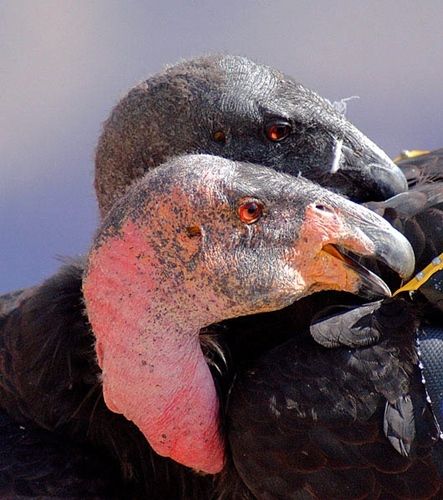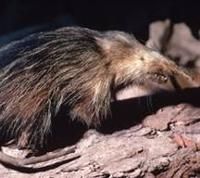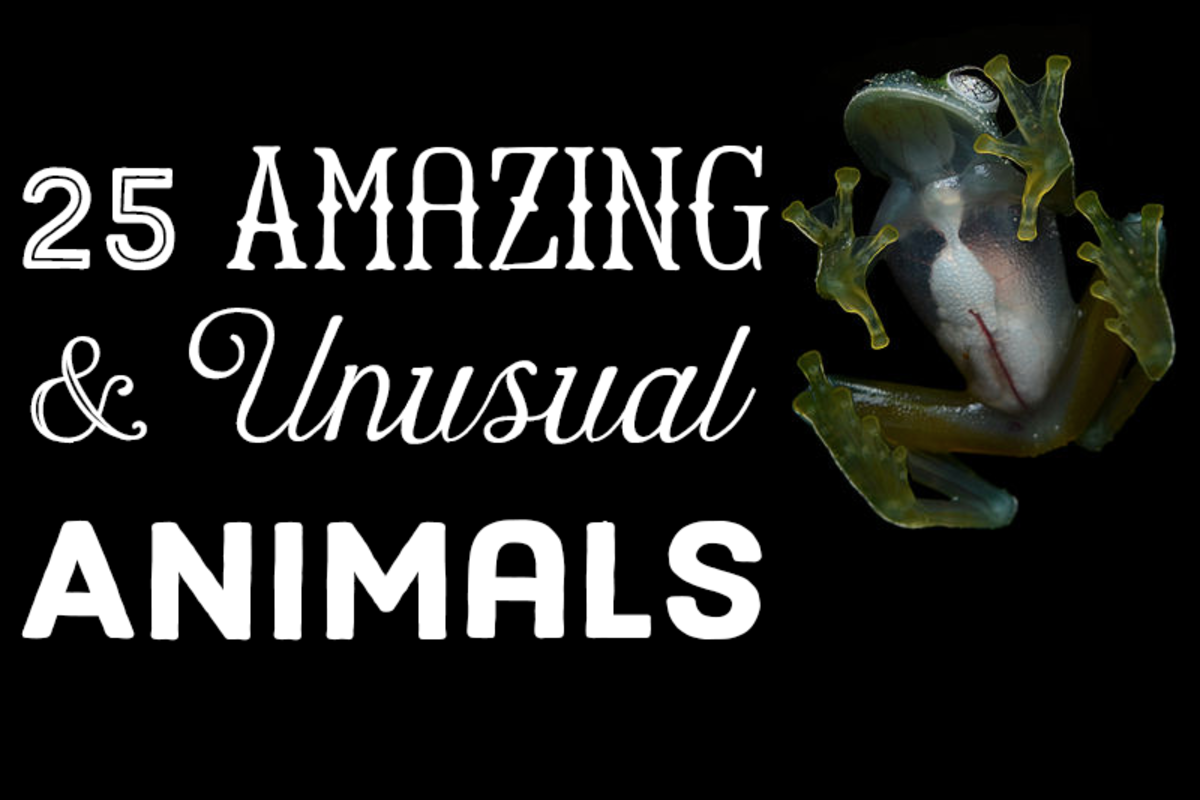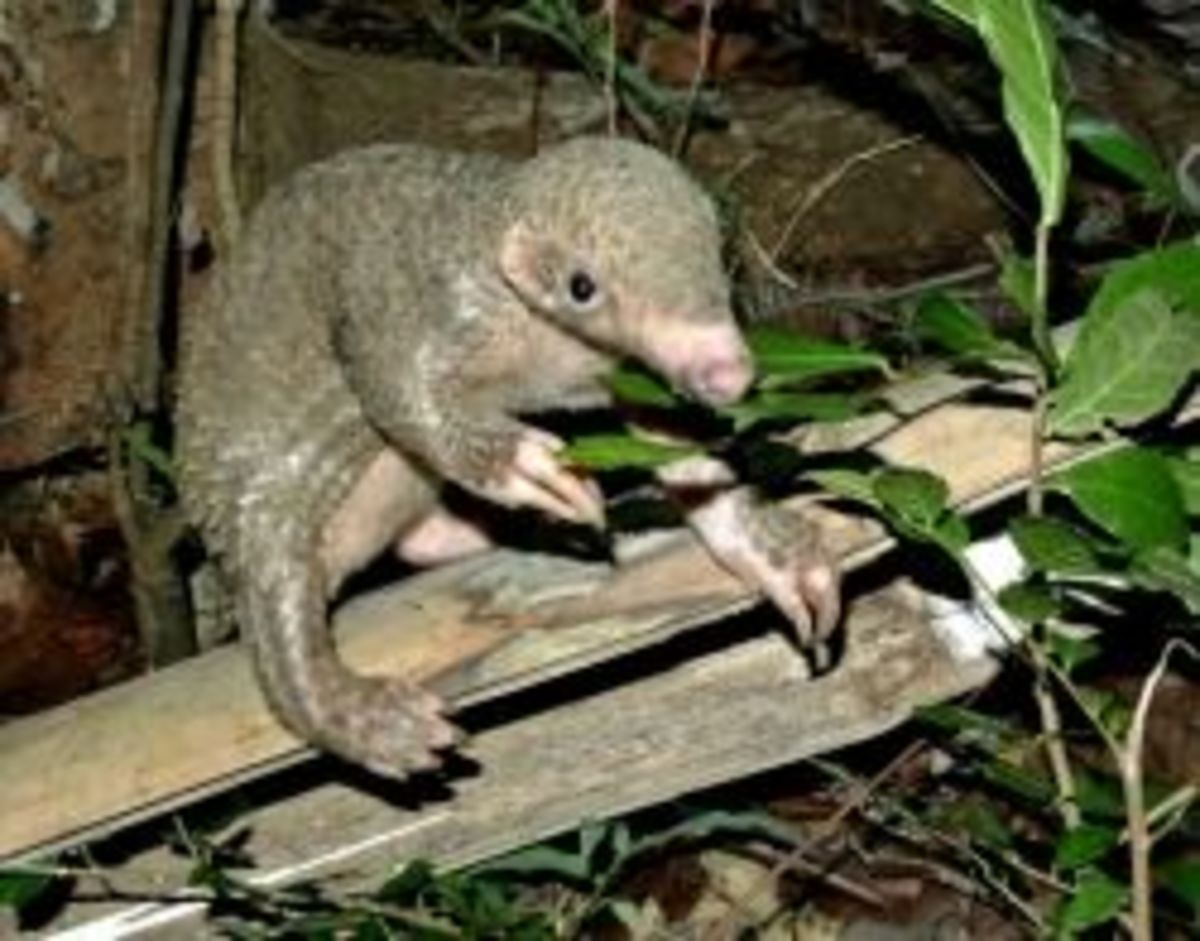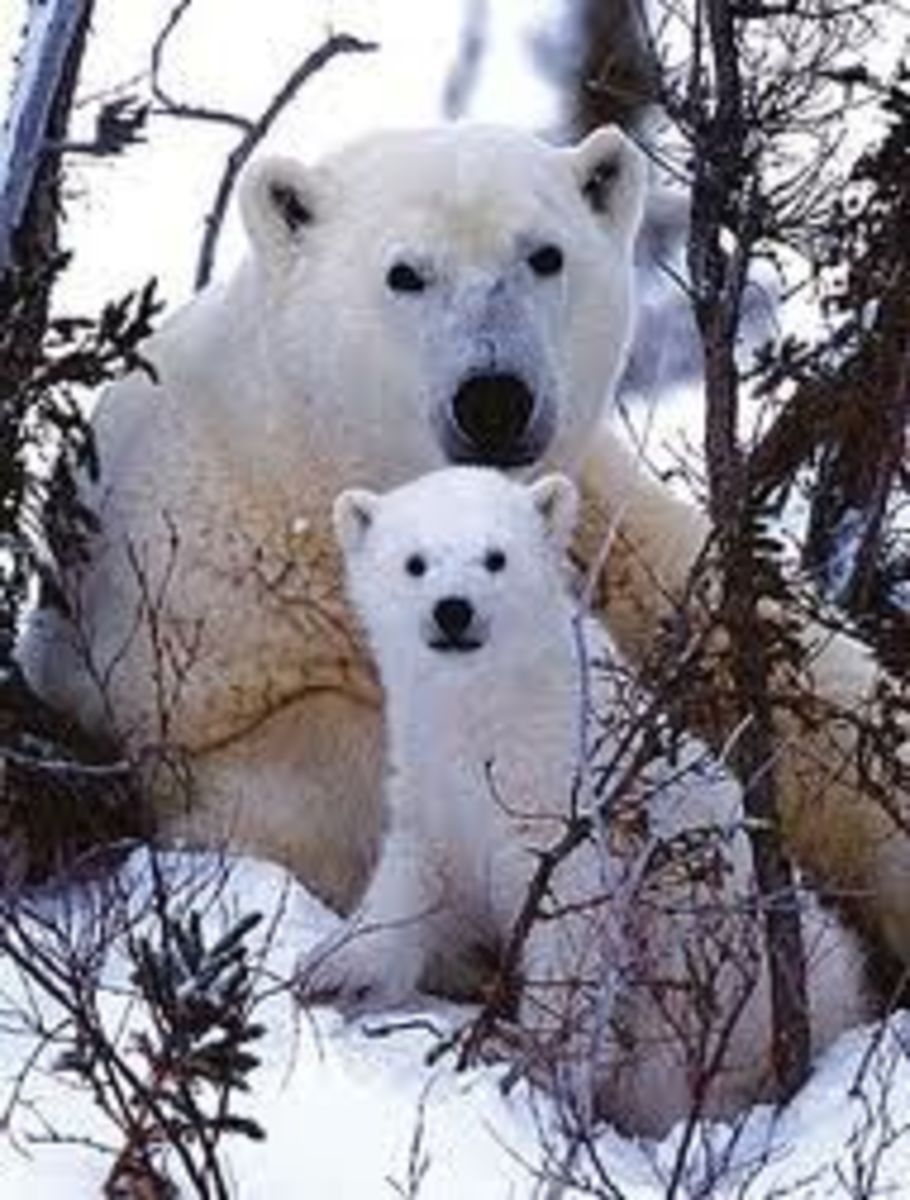The Ugliest & Most Fascinating Animals on Earth
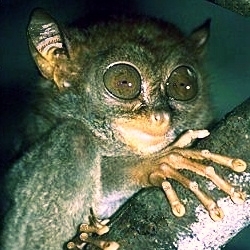
Beauty is in the eye of the beholder
O
ur amazing planet is filled with interesting and unusual animals -- some of them are downright ugly! This is a collection of some of the ugliest critters on earth. Interestingly, these species that we find "ugly" tend to be highly evolved and specialized for their respective environments or niches. I have included some general information about each of the species' biology, so there is plenty to learn, and most of it is FASCINATING.
Not all critters are cute and cuddly! Time to show some love for these under-appreciated critters. Do you realize that many conservation efforts focus on animals that are cute and popular with humans? For example, there is a lot more money being spent to protect/conserve cute mammals (such as panda bears) than there is on fish, reptile, and amphibian conservation. Despite the fact that at least one THIRD of all amphibian species are thought to be at risk of extinction (The Extinction Crisis).
I hope that this page helps you gain some appreciation for these unique and little known species! I've tried to provide a diverse selection of aquatic and terrestrial critters.
The photos on this page are not mine -- they are all licensed under creative commons and given proper attribution.
(Intro photo: Philippine Tarsier by LeaMaimone, Wikimedia Creative Commons).
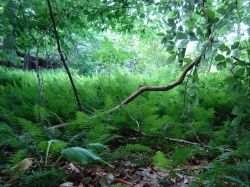
Definitions!
Before I go any further, I'd like to provide you with some definitions, so we're all on the same page!
Ecosystem = a community of organisms and their physical environment.
Community = two or more populations of DIFFERENT species that live in the same area.
Population = a group of individuals of the SAME species that breed and live in the same place.
Species = a group of organisms capable of interbreeding and producing fertile offspring.
Habitat = specific physical environmental conditions required to support a population.
Niche = how a species makes a living -- its place within an ecosystem.
Natural Selection = one mechanism of biological evolution -- the process whereby organisms that are best suited to a particular environment are more likely to survive and reproduce.
(Photo by me)
Now on to the animals....
Blobfish - (Psychrolutes marcidus)
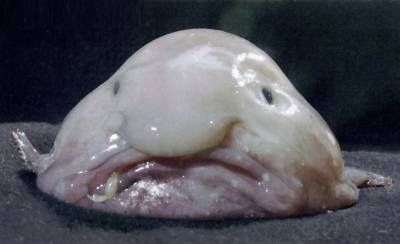
This is a really unusual creature and one that is rarely seen by humans. The blobfish (Psychrolutes marcidus) is probably one of the most accurately named animals on the planet -- it literally resembles a blob of slime. Found off the coast of Australia and Tasmania, these ugly critters are adapted to life in deep water, between 2,000 and 3,900 ft (600-1,200 m)!!!
Its blob-like body is slightly less dense than water, which enables it to float just above the seafloor without utilizing energy to swim. Saving energy is a big deal when you live in such a nutrient poor environment and the blobfish actually has a hard time swimming because it lacks muscle! It feeds by sitting and waiting for prey to pass by. Maximum length of 12 in (30 cm).
A form of commercial fishing known as "deep trawling" might cause the extinction of this unique species. Blobfish are often captured as by catch when fishermen drag nets along the seabed to catch crabs and other commercially valuable species.
(Photo by jamasca66 Flickr Creative Commons)
Tarsier - Genera: Carlito, Cephalopachus, and Tarsius
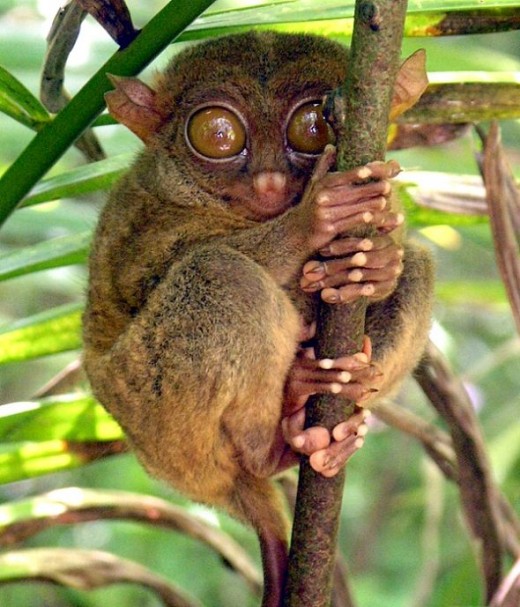
I find these nocturnal critters a little cute, but mostly they just remind me of Gollum on LOTR, check out those fingers! Tarsiers are placed into three different genera: Carlito, Cephalopachus, and Tarsius, all remaining species are found on the islands of Southeast Asia. They are tiny primates, usually weighing about 150 grams (five ounces) and are the size of a human hand. They can live 16 years or longer!
The tarsier's long, spindly fingers are an adaptation that they use to cling tightly to branches and their large eyes, which are 60 times larger than a human eye relative to body size, enable these nocturnal critters to see well in low-light. Each of its eyes is the same size as its brain! They are the only living primates that are entirely carnivorous -- they feed on insects, birds, snakes, lizards, and bats. Tarsiers can rotate their heads almost 360 degrees and a recent study found that tarsiers use ultrasound to communicate! Whoa!
Most Tarsier species are endangered or threatened due to habitat loss. (Photo: Philippine Tarsier by Roberto Verzo via Flicker Creative Commons)
Goblin Shark - (Mitsukurina owstoni)
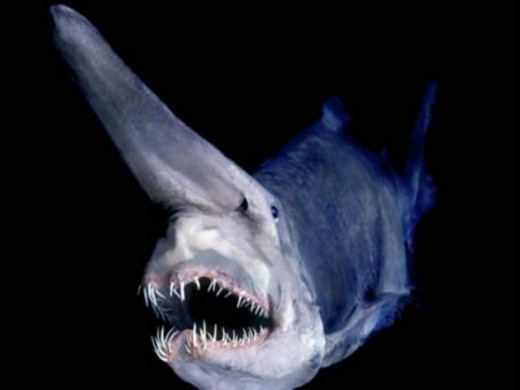
Is it just me, or do most deep sea creatures look really creepy? The goblin shark is no exception and gives me another reason to fear deep water! This species is found throughout the world, but only dwells in the deep sea where sunlight cannot reach. They were first discovered in waters off the Japanese coast.
Very few of these sharks have ever been caught, and consequently, little is known about them. We do know that the semi-transparent skin appears to be a pinkish color because of blood vessels just below the surface. They feed on other deep sea critters, such as crustaceans and cephalopods (small, bony fish), which they locate in the low-light depths with the help of their long snout. The snout contains electro-sensitive organs that sense prey and once the prey has been located, the goblin shark protrudes its jaw and sucks the helpless critter into its mouth (with a tongue-like muscle) like a vacuum!
Little is known about the biology of this species. They usually grow to around 200 cm in length, but can be as large as 617 cm. Goblin sharks are fished commercially off the coast of Japan and are also caught as a bycatch during commercial fishing operations. Although this species is rarely encountered, it is not a species of concern because it's widespread in the Atlantic, Pacific, and Indian oceans. This is a mysterious species all-around! Check out the links and video below for more information.
(Photo: Wikimedia creative commons)
Goblin Shark video
The narration is in Japanese, so I couldn't understand it, but it is some excellent video footage of what this shark looks like!
"Frogs are nature's canary in the mine. The adults of most species are unusually sensitive to small changes in the environment because they live in the water, permanently or part-time, or in moist hideaways in forests. Their larvae - tadpoles - are aquatic bottom feeders. In both adult and larval stages the typical amphibian skin functions as a moist and porous apparatus for the exchange of air, making it an absorbent pad ideal for collecting poisons and parasites." -Edward Wilson
Naked Mole Rat - (Heterocephalus glaber)
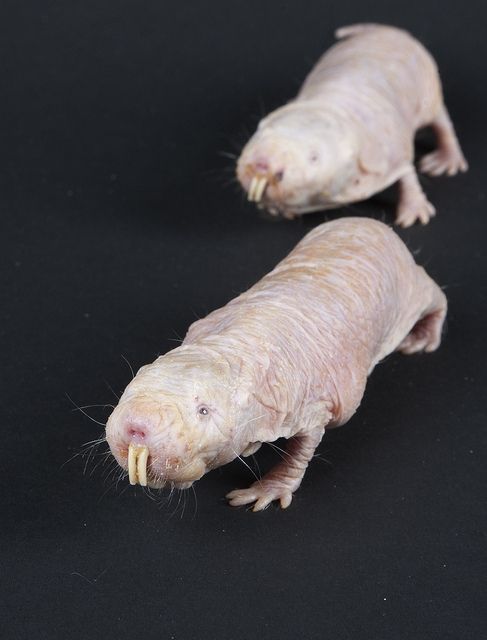
Just another reason why you should never judge a book by its cover, naked mole rats might look a little cryptic, but they're actually extraordinary mammals! I first learned about this species in a mammalogy class, and I have been fascinated by them ever since.
Naked mole rats are hairless and nearly blind -- and are highly adapted to their niche -- underground. This species spends most of its life living in underground colonies that average about 75 individuals, but can be as large as 300. Because they live in an oxygen-limited environment, their respiration and metabolic rates are low and their blood has a high affinity for oxygen. They also do not regulate their body temperature like most other mammalian species (homeostasis), rather, they are thermoconformers. Their body temperature tracks environmental temperatures.
Even more fascinating, naked mole rats lack a key neurotransmitter and hence cannot feel pain. They are also long-lived for a mammal of their size (up to 30 years) and have a high resistance to cancer.
Although naked mole rats are rodents, they make their living in a way that's more akin to ants or honey bees. They have a eusocial structure; only one female (a queen) and one to three males reproduce at any given time, all of the other individuals are "workers." They eat mainly roots and tubers that they encounter while burrowing in the ground. They live in Eastern Africa.
National Geographic: naked mole rat
(Photo: Smithsonian's National Zoo via Flickr Creative Commons)
Marabou Stork - (Leptoptilos crumenifer)
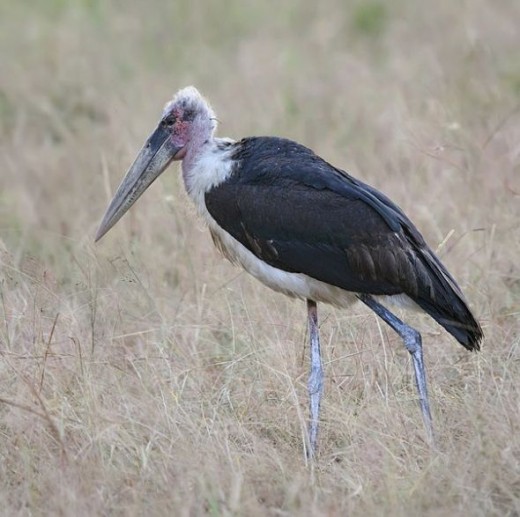
Of course I need to include at least one bird on my list! Marabou Storks happen to be one of my favorite birds and are sometimes referred to as "undertaker birds" -- you'll soon find out why.
This species is a scavenger and it is well-adapted to its feeding niche. It lacks feathers on its head, much like a vulture, because it would be impossible to keep its head feathers clean after feeding. These are large birds that can be up to 60 inches tall and weigh up to 20 pounds. Its wingspan can be up to 13 feet across (although 7-9 feet is average) -- one of the longest of any living bird.
The massive bill of the marabou stork enable it to intimidate and steal food from other carrion eaters, such as vultures. Although it serves a useful role in the environment by cleaning up carrion and other waste, the marabou stork is omnivorous and will eat a wide variety of prey (both dead and alive), including: nestlings, other birds, reptiles, fish, insects, frogs, crocodile babies, and just about anything else it can swallow.
They are found in Africa south of the Sahara and their numbers have recently been increasing due to an increase in garbage dumps.
(Photo: Muhammad Mahdi Karim via Wikimedia Commons)
"It is inconceivable to me that an ethical relation to land can exist without love, respect, and admiration for land, and a high regard for its value. By value, I of course mean something far broader than mere economic value; I mean value in the philosophical sense." - Aldo Leopold
Alligator Snapping Turtle - (Macrochelys temminckii)
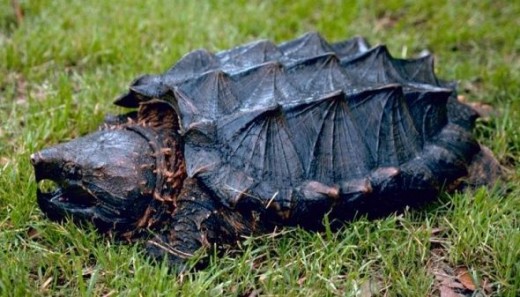
Here is another cool, albeit not very cuddly, species! Alligator Snapping Turtles sort of resemble heavily-armored tanks and they're certainly able to defend themselves -- against everything except for humans and habitat destruction.
Alligator snapping turtles are one of the largest freshwater turtle species in the world (the largest in North America) and are found primarily in the American Southeast. They actually resemble plated dinosaurs given the three rows of spikes on its shell and its spiked tail! This amazing reptile certainly looks prehistoric.
This species catches its prey by luring fish or frogs with a red, worm-shaped piece of flesh that dangles from its tongue! It functions as a built-in fishing lure and must be pretty successful as these mammoth turtles are usually between 15 and 32 inches long and weight 150 to 180 lbs (males are larger). They can be much larger; one captive alligator snapping turtle weighed 250 lbs and there is an unverified report of a 400 lb alligator snapping turtle found in Kansas in 1937. They can live up to 70 years in the wild and never stop growing!
Alligator snapping turtles tend to have a grumpy / aggressive disposition, but usually don't attack people unless provoked. A mature individual has no natural predators. Unfortunately, this species is currently declining due to habitat destruction, over-harvesting for meat, and the exotic pet trade. It is listed as threatened by the IUCN and is endangered in several states.
National Geographic: alligator snapping turtle
(Photo: U.S. Fish and Wildlife Service via Wikimedia Commons)
A big turtle! (Photo: California Academy of Sciences via Flickr Creative Commons)
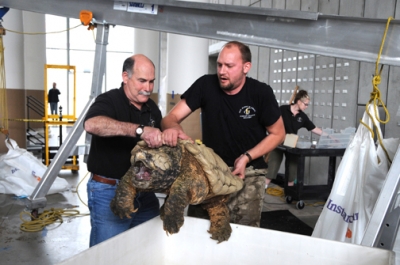
Time to vote~
What do you think so far?
Star-nosed Mole - (Condylura cristata)
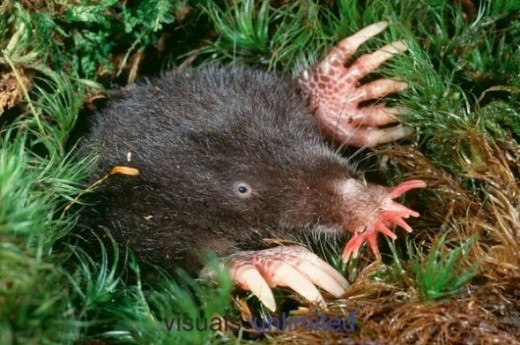
The first species on my list that I have actually seen in the wild is the Star-nosed Mole -- a bizarre little mammal. Its fleshy nose is definitely unique and useful, although it looks somewhat other-worldly!
Like other moles, this species digs shallow tunnels just under the surface of the ground to forage -- you might have encountered mole tunnels in your lawn or elsewhere! The star-nosed mole is visually blind, but amazingly, the testicles on its snout are used like a visual organ. In fact, research shows that the testicles' movement when they touch an object are similar to the eye movements of animals that use vision!
The testicles on their snouts are extremely sensitive and can detect the electrical activity in their prey -- usually worms, insects, and crustaceans. The star-nosed mole is an interesting species that is highly adapted to hunting in low-light areas and optimizing its foraging success!
More information about the star-nosed mole
(Photo via Flickr Creative Commons)
"We look to feel good when we should feel ashamed. "Wildlife management" is a sorry contradiction in terms. There already is a management plan. It has been unfolding since life's appearance on earth." -David Carroll
More Ugly Animals!
Click thumbnail to view full-size







Anglerfish - Order: Lophiiformes
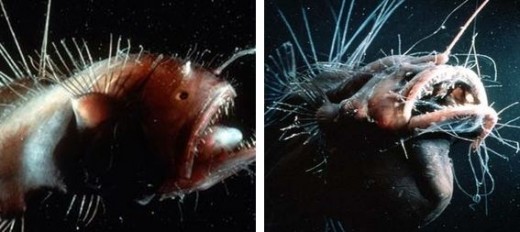
I think that these fishes are scary more than anything else -- and they are certainly cryptic and ugly as well!
As a whole, this group of fishes consists of many different species that range in size from 8 inches to over 3 feet in length and are placed in 16 families. All of the species are characterized by a fleshy growth on the head, which serves as lure for prey.
They occur worldwide and while they are best known for living in the deep sea, not all species do, they are also found on the continental shelf. One of the most well-know anglerfish families is Ceratiidae, the species belonging to this family are commonly called sea devils and they have a bioluminescent lure that attracts prey in the dark ocean depths. Hence, anglerfishes are highly adapted to living in dark and frigid conditions.
The Ceratioid anglerfish have unique sexual strategies and show extreme sexual dimorphism. Males are much smaller than females and the males become a parasite to the females, and are completely dependent upon the female for survival. In some species, the parasitic relationship must be established in order for mating to take place. Over time, males physically fuse to a female's body and connect to her bloodstream -- eventually only his testes remain. Pretty strange, but also an adaptation to the harsh environment in which they live!
(Photos via MTHSEcology and licensed under Creative Commons Attribution)
Aye-aye - (Daubentonia madagascariensis)
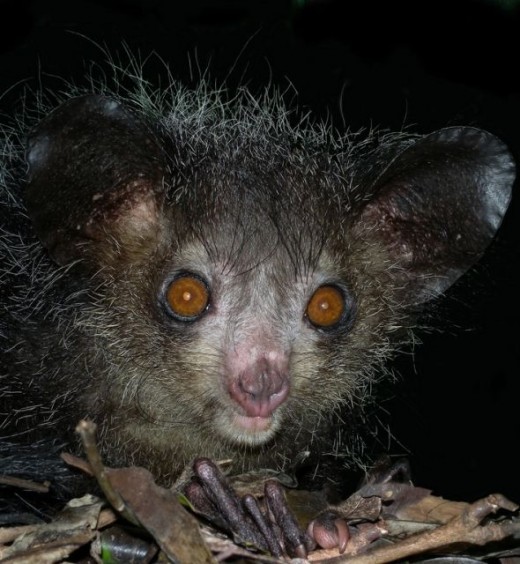
This is a unique primate species that has a history of mis-classification by scientists and superstition by Madagascar natives. I thought it was important to include this species, given the conservation issues it's facing.
Aye-ayes were originally classified as rodents, due to the fact that its incisors never stop growing (a characteristic of rodents), further investigation has relieved that it is a primate. Recent research suggests that it is a lemur. They are only found in Madagascar.
This is a unique species in that it occupies the same niche as a woodpecker and its fingers are what make it unique. The third finger is thinner than the others and is used for tapping and grooming, while its fourth finger is the longest and is used for pulling insects out of trees. Aye-ayes also enjoy eating fruit, which they often steal from farms, and sap. They are arboreal and travel through the forest by leaping -- much like a squirrel.
Aye-ayes are listed as near threatened and it faces much persecution by the Malagasy people for two reasons. First, the aye-aye steals valuable fruit crops from farmers and secondly, the aye-aye is considered to be a bad omen. When spotted by the Malagasy, they are often killed immediately and hung up so the evil spirit will be carried away.
From rhinos to elephants to aye-ayes, so many animals are being killed because of ancient traditions, archaic beliefs, and poverty -- we need a change.
(Photo by Frank.Vassen via Flickr Creative Commons)
Time to share your opinion!
What do you think about ugly animals?
"We abuse land because we regard it as a commodity belonging to us. When we see land as a community to which we belong, we may begin to use it with love and respect." - Aldo Leopold

